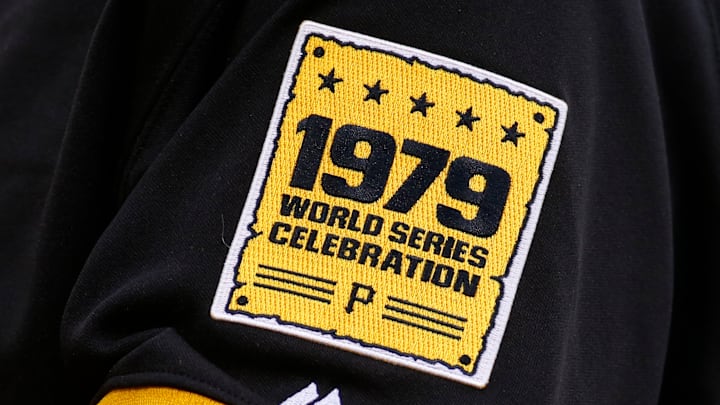
Number Three
1979
The 1979 “We Are Family” team had multiple highly talented players, some of whom didn’t get their just dues. Numerous players on the ‘79 team flew under the radar, even if they were major contributors to the team. Overall, they were a good team and rank number three on today’s list.
Willie Stargell won his first and only MVP award this season, turning in a strong .281/.352/.552 triple-slash, and 137 wRC+. He also went yard 32 times. But this season does not look like an MVP season in retrospect, especially considering how good Stargell was in his prime and the fact he wasn’t even the most valuable player on his team.
That nod would go to right fielder, the Cobra, Dave Parker. Parker batted .310/.380/.526. While he didn’t hit as many home runs as Stargell with 25, he also swiped 20 bases. Overall, he had a .394 wOBA, and 142 wRC+. On top of that, he was a solid defensive RF with +2 TZR. Somehow, Parker only finished 10th in MVP voting.
Everyone looks at Stargell and Parker as the two major contributors to the Pirates’ ‘79 World Series, but Phil Garner was silently one of the most valuable players on that team. Along with 113 OPS+/wRC+, he provided outstanding defense at second base and third base with +6 TZR. He was second to Parker in both bWAR and fWAR.
Bill Madlock (131 wRC+/353 PAs), Bill Robinson (108 wRC+/455 PAs), and John Milner (128 wRC+/386 PAs) were some of the aforementioned unsung heroes. Tim Foli and Rennie Stennett, while not providing much in the way of their hitting, provided outstanding middle infield defense, combining for +16 total zone runs (+11 for Stennett at 2B and +5 for Foli at SS).
Pitching was a key part of the 1971 team. Three arms started at least 15 games and had an ERA+ of at least 120 (20% greater than average). They got major contributions from then-future Hall of Famer Bert Blyleven (108 ERA+ in 237.1 innings), youngster Don Robinson (101 ERA+ in 25 starts), and Bruce Kinson (122 ERA+/172.1 innings). Even better, they had five relievers with 30+ IP and an ERA+ of 120 or higher. Four of the five had an ERA under 3.00.
The biggest contributors on the pitching side of things was John Candelaria for the starters, and Kent Tekulve among the relievers. The Candy Man pitched 207 innings, working to a 3.22 ERA, 3.96 FIP, and 1.17 WHIP. Teke saved 31 games while posting a 2.75 ERA, 3.24 FIP, and 1.18 WHIP in 134.1 innings.
